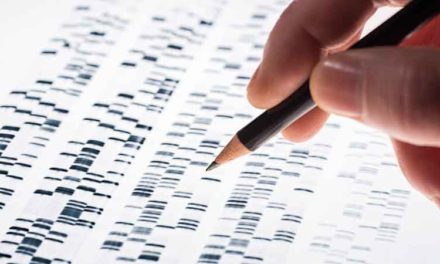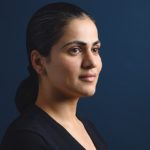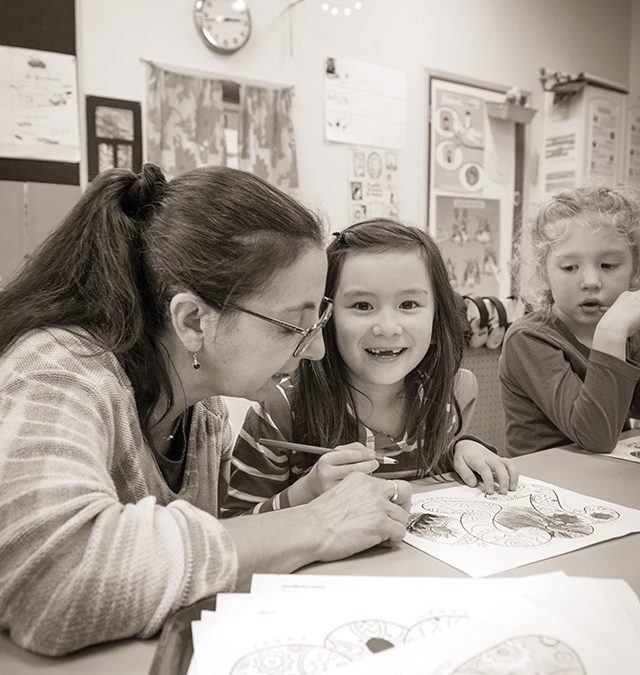Shanda Williams completed her nursing studies at Samuel Merritt University and is now a licensed RN.
It’s still mostly white and female, but recruiters at Samuel Merritt University and Cal State East Bay are looking for diversity.
On the first day of orientation at Oakland’s Samuel Merritt University, where Shanda Williams was primed to enter nursing school, the moderator handed out index cards two years ago and instructed the students to write why they were pursuing a career in health care.
Williams wrote: “I want to change the health in my community.”
That community, where Williams spent her childhood and now lives, is East Oakland. Her dream is to work at Highland Hospital—the place her family went for health care and where her own daughter was born.
After quitting a lucrative position in hotel management to go back to school, the 32-year-old graduated in May with a bachelor’s of science degree in nursing. In August she passed the licensing exam, officially becoming a registered nurse.
Williams is one of countless new and wannabe nurses wanting to make a difference. Yet getting there has its challenges, even though there is a nationwide shortage of registered nurses.
As more people are seeking and getting health care, from aging baby boomers to patients with more access through the Affordable Care Act, nursing schools are feeling the impact and struggling to keep up with demand.
Interesting but not surprising to health-care experts, a 2013 project of the National Council of State Boards of Nursing and the Forum of State Nursing Workforce Centers found that 3 percent of registered nurses are Hispanic/Latino, 6 percent are black/African American, and an 83 percent majority is white/Caucasian. And that, nursing pros and experts said, is worth doing something about.
“The need to attract students from underrepresented groups in nursing—specifically men and individuals from African-American, Hispanic, Asian, American-Indian, and Alaskan native backgrounds—is a high priority for the nursing profession,” the American Association of Colleges of Nursing has said.
Nurses make up the largest segment of the health-care workforce and must be sensitive to myriads of nuances in culture, from religious practices to ethnic traditions, in their work. Cultural awareness continues to be a huge topic in health care as national demographics change, with the U.S. Census Bureau, projecting that the country’s 17 percent Hispanic population, for example, will exceed 28 percent by 2060.
Celia Besore, the executive director of the National Association of Hispanic Nurses, cited financial constraints as well as a shortage of support as potential hurdles to nursing for Hispanic students. “Many Hispanics are first in their family to attend college, and therefore they may lack an understanding of how the system works and what is expected of them since they may not have role models,” she said. Her organization received a grant from the National Institutes of Health to profile 100-plus “amazing” Latino nurses over the next five years, promoting their inspiring stories on radio and social media.
Last year, California State University East Bay was designated a Hispanic Serving Institution by the U.S. Department of Education, making it eligible for grants to expand education opportunities for its Hispanic students. Monika Eckfield, a registered nurse who also holds a doctorate and is assistant professor of nursing there, coordinates the school’s Diversity in Nursing Task Force. She said the Cal State East Bay nursing program should be drawing from the existing diversity on the campus. But to reach students from “a broader range of life experiences,” analyzing the bachelor of science admissions criteria for nursing with an eye toward recommendations for adjustments may be in order. That way, the admissions process would catch “all valuable qualities” of applicants, she said.
In February, Cal State East Bay takes a turn hosting the fifth annual Florence Stroud Black History Month Conference. Organized by the Bay Area Black Nurses Association, the event discusses topics related to nursing and always involves some attention to diversity.
Samuel Merritt University’s three campuses graduate about 500 nurses each year, the most in California, said Aara Amidi-Nouri, chairwoman of the Bachelor of Science in Nursing program. She said the school sees an “obligation” to address diversity—which it does with scholarships, outreach, and vigor. SMU’s Nursing Success! Seminar is a three-day summer event for prospective students from underrepresented groups. Besides providing information about SMU’s nursing program, the free seminar offers a glimpse of the nursing profession through lectures and SMU’s popular simulation center.
If participants go on to attend nursing school elsewhere, does SMU consider its seminar a success? “Yes,” said Amidi-Nouri, also a registered nurse with a doctorate. “Absolutely.”
Williams attended the inaugural seminar in 2012 and said the experience “cemented” her decision to attend SMU. She appreciated the overall support, including “very clear” one-on-one conversations regarding financial aid.
Money matters. One student balked at SMU’s high tuition, fearing “gobs of debt,” and chose less-costly public education. Another recent grad said the money for nursing school will come—from scholarships, loans, and work-study—but only if the student gets a slot, which is competitive at any school. Cal State East Bay gets about eight nursing applicants for each available seat, compared to three per spot at SMU in 2014.
Williams, an SMU President’s Ambassador, said she knows she has potential to make a difference as a role model. Of 57 graduates in her SMU class last spring, she was one of 10 black students, the most for SMU’s bachelor’s of science program in nursing and up from three black graduating students the previous year. By remaining visible, she can show her journey through nursing school is possible.
Her advice to aspiring nursing students: Research schools, meet with the admissions department, know your physiology and anatomy (“especially your physiology”), stay connected, and in the midst of doubt—because “every person feels like the biggest idiot sometime”—remember why you wanted to be a nurse.
And with that, Williams pulled out the index card she tucked into her wallet two years ago, tattered but still readable: “I want to change the health in my community.”
















